The year is 1957. A ship is unloading large boxes in the Port of Oslo. At Kjeller, a new FFI building is being erected. The computer age is arriving. It can be measured in tonnes. And has to be smuggled in.
FFI was to become a pioneer of computer technology. It was both a matter of curiosity and necessity.
FFI received its own Mathematics Division in 1949, three years after the institute was established. Electromechanical machines, both desktop and more advanced machines, were crucial in order to be able to develop weapons and the systems around them. The ‘formal’ name of the division was “a mathematical theoretical group”, with an underlying computing office. This was subordinate to the Physics Department.
It was matter of being able to perform advanced calculations quickly, e.g., for the trajectory of a missile.
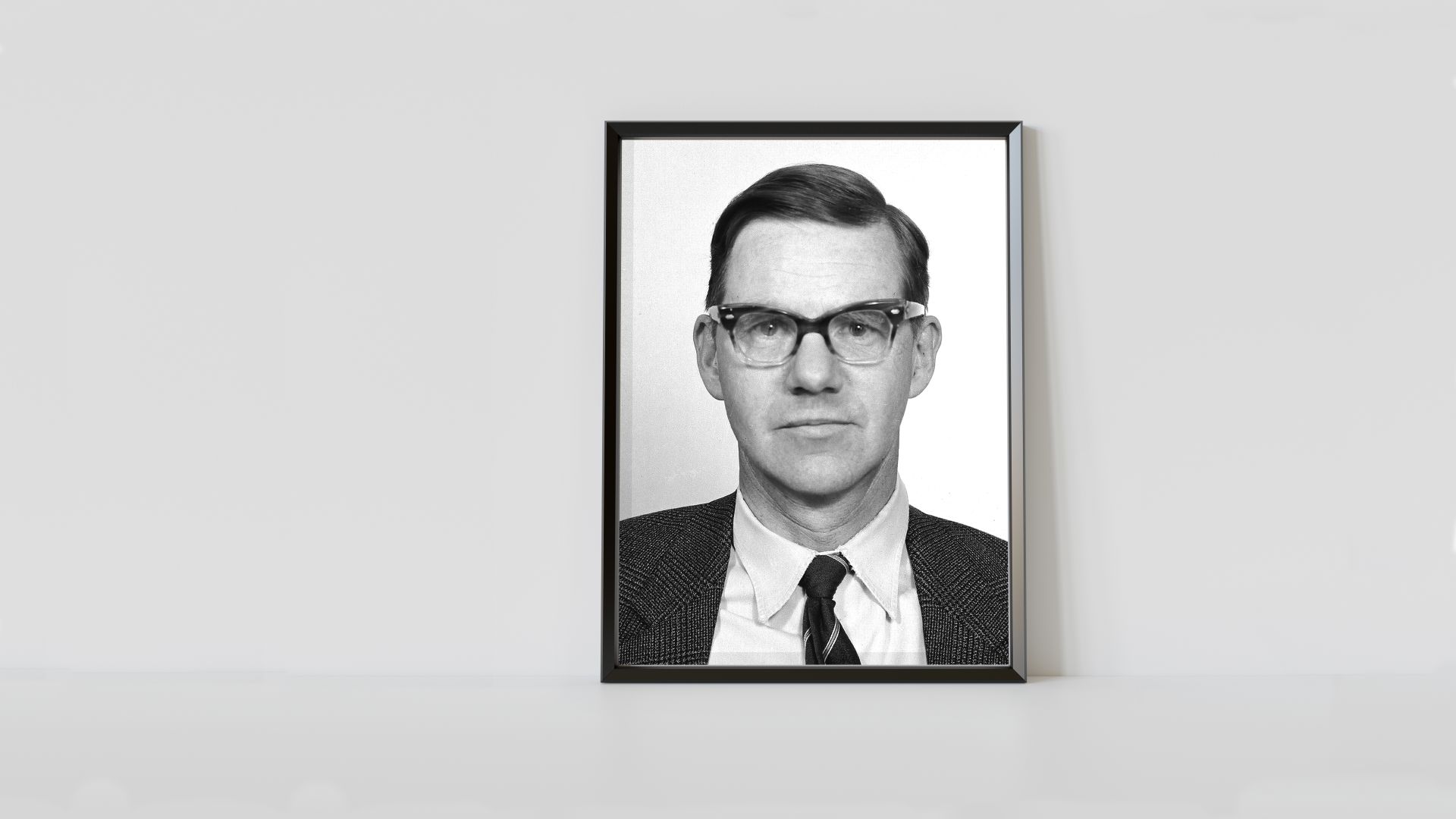
Astronomer, Mathematician and enthusiast Jan Vaumund Garwick was a key figure. As head of the Mathematics Division, he was in charge of the technology that got the job done.
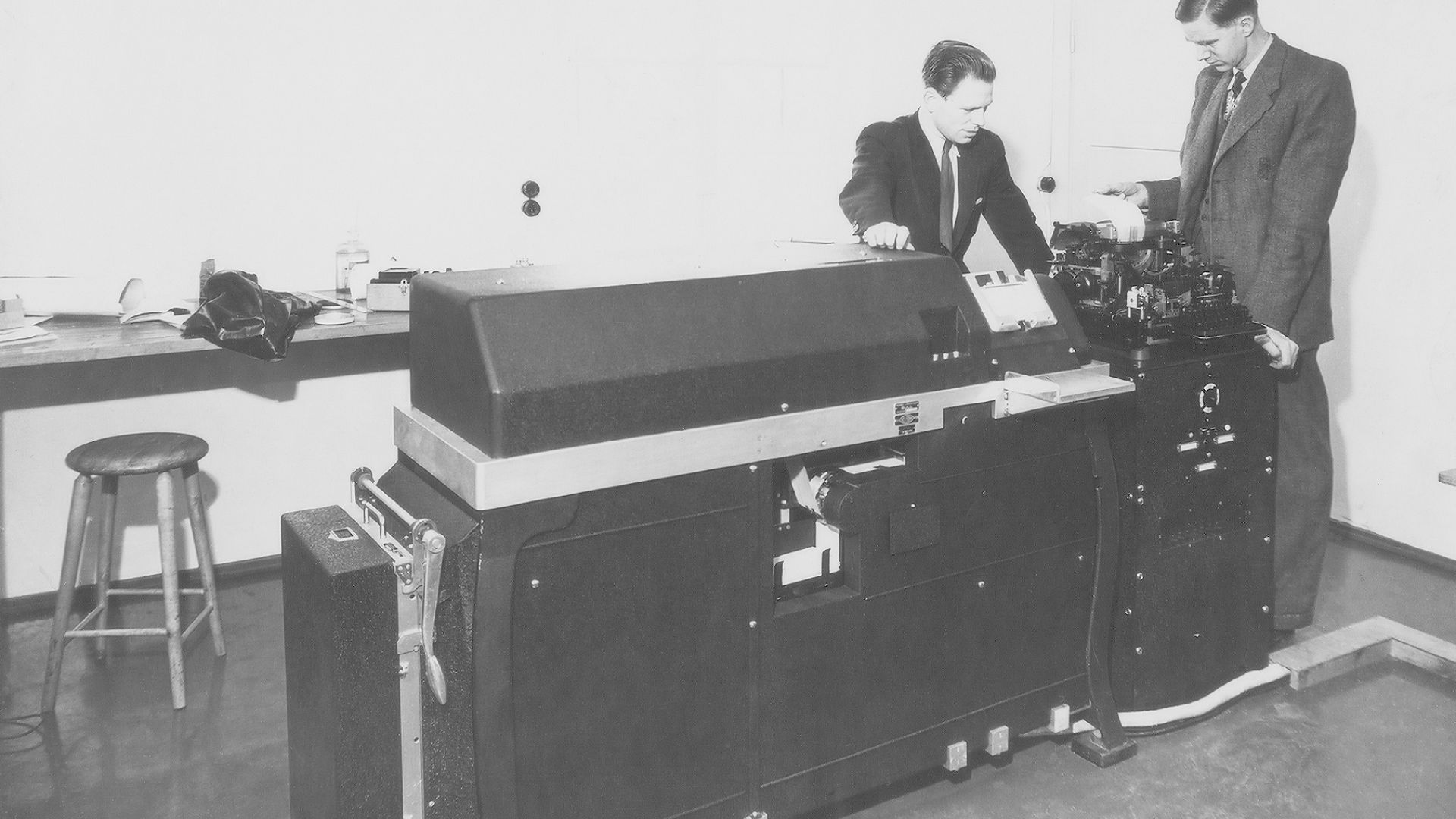
A noisy keypunch machine in the basement was capable of automating several thousand repeated keystrokes.
Jan Garwick, pictured on the right, said that this keypunch machine “can accomplish in one day what would take a man three to four weeks!”
But it was not enough. Garwick saw the technological developments on the horizon. He wanted to pick up the pace. He wanted an electronic data processing machine.
Manchester had the answer
The answer was found in Manchester, the city that had been the cradle of Industrial Revolution in the previous century. Garwick had contacts at the university there, a community that was a leader in the development of computer technology. He had personally been part of the development work in 1952.
This way, he ensured FFI the opportunity to purchase the first computer that was industrialised from the Manchester community: It was called Mercury, was manufactured by Ferranti and production number 0 was delivered to FFI in 1957.
The machine was given the name Fredric. It was both an acronym for Ferranti Rapid Electronic Defence Research Institute Computer and the name of FFI’s first Director General, Fredrik Møller.
Jan W. Garwick was involved in its development. He and his colleague Ernst Selmer knew it like the back of their hands.
“Already in 1954, it functioned using core memory and there was no doubt that we had to secure such a machine at Kjeller”, said Garwick in an interview with the magazine Farmand in 1989.
Purpose: Deciphering the Russians
However, it cost NOK one million. This was money FFI did not have. Then, FFI ‘found’ an account in England dating back to the war. It was Selmer’s contacts with military intelligence that enabled the funds to be made available. They needed a machine to decipher Russian communications.
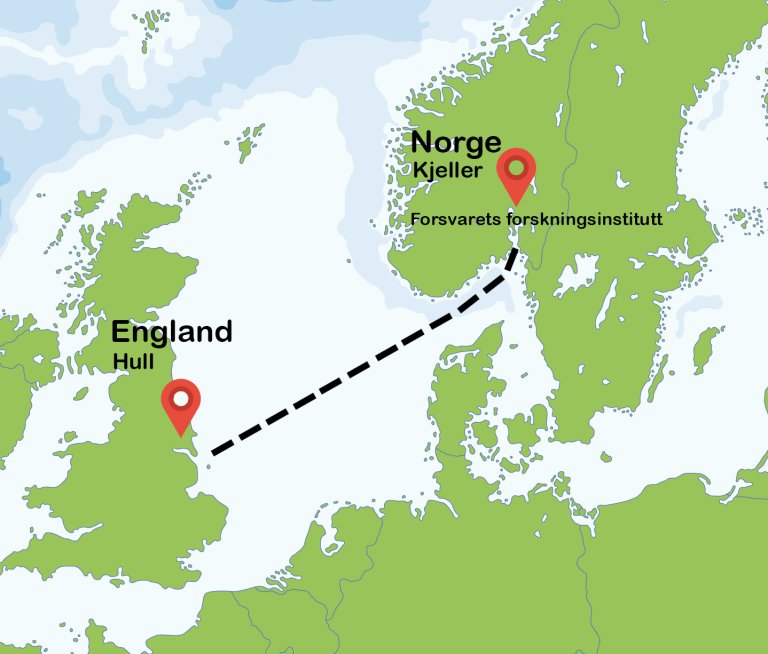
Nevertheless, a tricky problem persisted: Customs and taxes.
“We literally had to smuggle the machine into Norway. It filled several large lorries and I personally accompanied it on the truck bed from Manchester to Hull, where it was shipped out. I was equipped with a diplomatic passport but customs officers had never before seen such a far-reaching diplomatic post. When the boxes could finally be unloaded in Oslo, the customs officers had to submit to the seal of the Norwegian embassy in London, but they made an awful racket”, Garwick explained in an interview with the magazine Farmand in 1981.
To house Fredric, the physics building was given an extension comprising three entire floors. The machine room filled the first floor. In the basement, a cooling system was installed to direct the heat loss of 20,000 watts from the 2000 vacuum tubes into open air. Steam plumes billowed from the building.
20,000 watts produced clouds of steam
The machine was ‘blank’. All the necessary software had to be developed at Kjeller.
What did Fredric look like? A visitor would merely see a wall comprised of metal doors. In the middle of the doors was a clock and a large switch panel. In front of it was a compact metal desk, with something resembling an overgrown typewriter.
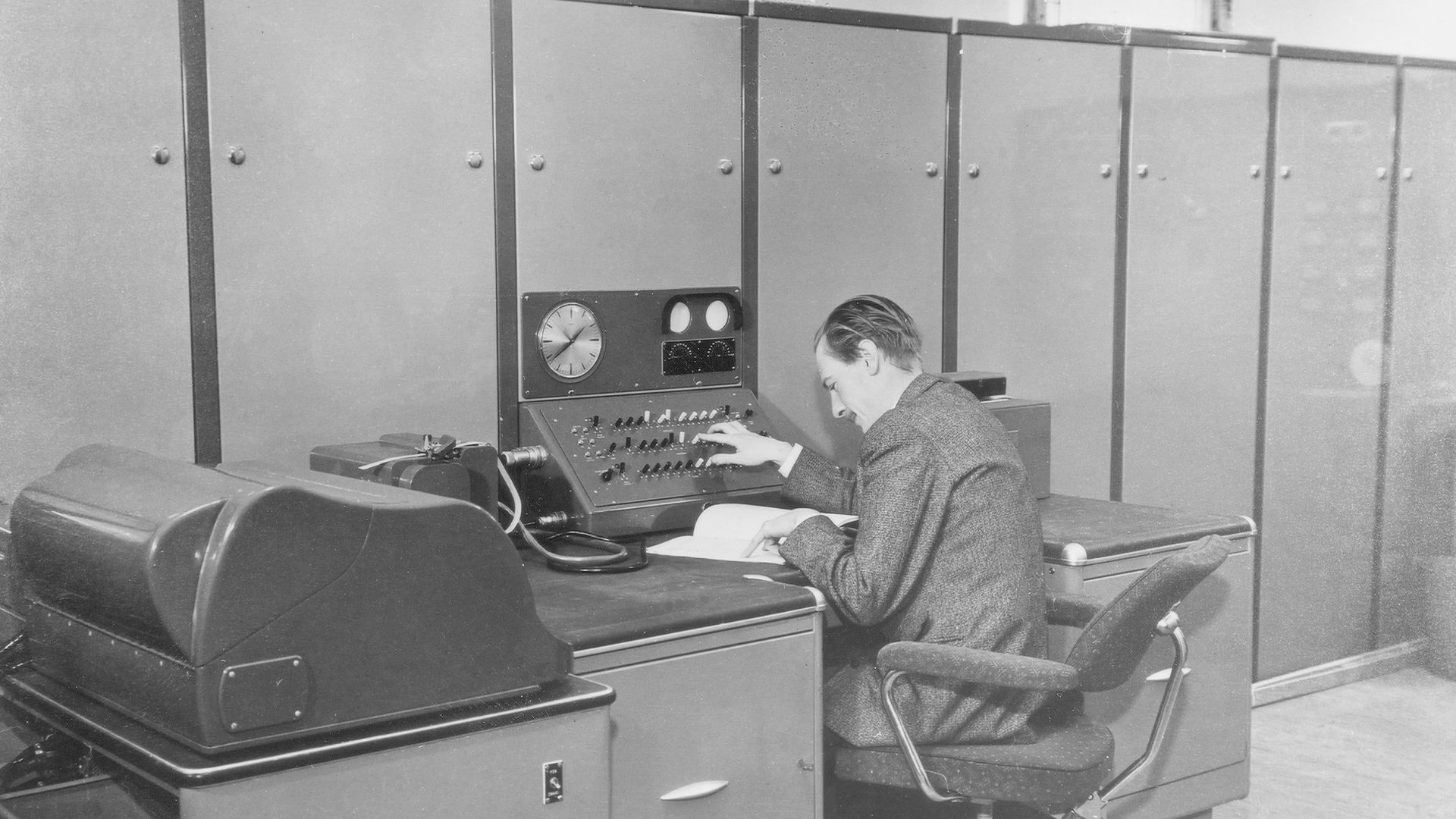
Harald Keilhau is operating Fredric, FFI’s first electronic computer with 2000 vacuum tubes and an enormous heat loss.
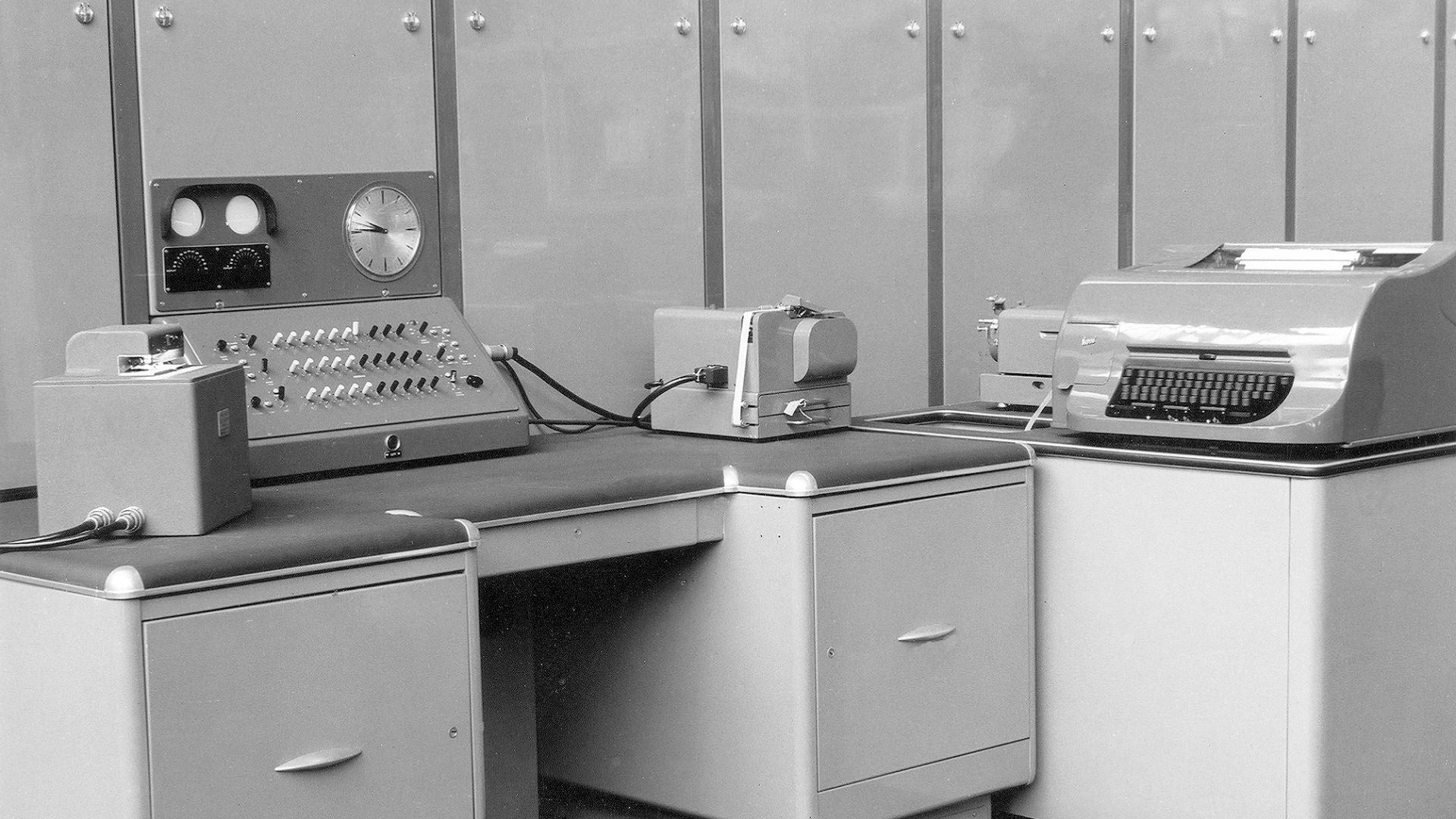
Ferranti Rapid Electronic Defence Research Institute Computer (FREDRIC) represented a breakthrough in researchers’ ability to solve complex mathematical problems. Fredric was among the fastest computers in Europe at the time FFI obtained it.
Fredric was dependent on punched tape, a strip of paper with punched holes. This was an old invention that was already in use in telex machines.
Now, the strip was used for input and output of computer programmes. The advantage of punched tape over punch cards was that the data would not pile up. It could also be edited, with the aid of scissors and tape, be rewound and reused.
Intelligence and missile research was naturally among the areas that required advanced computing technology. However, there were also more unusual assignments.
One of the first jobs performed by Fredric at Kjeller was the calculation of the chemical composition of Jarlsberg cheese.
It was also used to sort the membership register of the Norwegian Seafarers' Union.
FFI became a computer manufacturer
FFI itself became a computer manufacturer. The institute had a key role in a number of different computers in the early 1960s, which in turn led to the founding of Norsk Data and the computer division of Kongsberg Weapons Factory (KV). The first was LYDIA (1962) which was not build using vacuum tubes but was instead transistor based. It was succeeded by SAM, SAM2 and SAM3.
Everything can be traced back to Garwick and his team. He has since come to be known as the “the father of Norwegian Informatics”. At the time, was known as the wizard: Garwick was the visionary, eccentric and brilliant FFI researcher who discovered and spurred many apprentices during this pioneering age.
Garwick’s apprentices came to have considerable influence on computer technology and informatics, both nationally and internationally. Ole Johan Dahl and Kristen Nygaard met at FFI. Yngvar Lundh, Lars Monrad Krohn and Rolf Skår are equally important. The latter were involved in establishing Norsk Data.
Norsk Data was an establishment that put to shame all the statements – including those by Norwegian professionals – that there was no point in Norway developing its own computers.
Fredric was one of the first steps into the digital age, both for FFI and Norway.
FFI would subsequently take many and giant leaps forward. To begin with, there were not many shelf items to choose from. Therefore, FFI created several advanced computers itself. Some were electromechanical.
Even Fredric was not able to solve the mathematical problems involved in correctly guiding the Terne rockets fast enough. The gigantic machine also had no business being on a vessel. Therefore, skilled individuals at the mechanical workshop assembled gears and gearwheels in brass and bronze into what became a functioning analogue computer at sea. It was precise work.
Listening in an ocean of noise
The computing power at FFI was usually used for very specific purposes. As part of the U.S.-supported Bridge Programme, the researchers created the signal processing device Lydia. It was not programmable but it was very fast. It was to search for faint acoustic signals in a literal ocean of noise.
Using the device, it was possible to detect Soviet submarine traffic. FFI then made several versions of SAM. This was a programmable machine. The first SAM was developed to analyse data from Penguin tests. At the time, it was possible to purchase computers but there was a desire for FFI to be able to make its own computers, both for learning and commercialisation purposes.
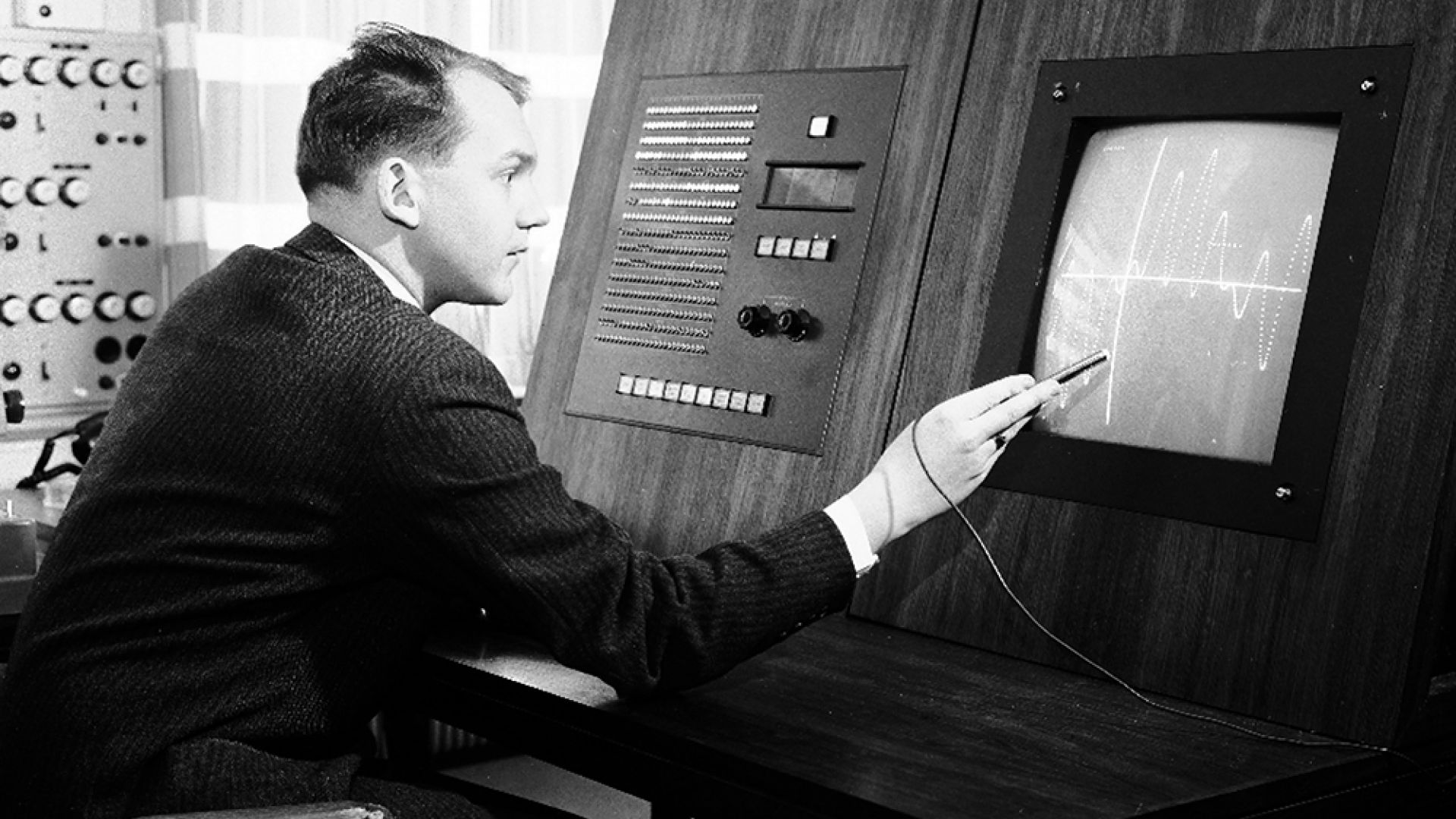
In 1965, Rolf Skår is operating a very futuristic solution: Using a ‘light pen’, he controls text and figures on the monitor of the specially built operator desk for SAM.
Skår would later become one of the founders of Norsk Data. Since 1973, the machine has been on display at the Norwegian Museum of Science and Technology.
First on the precursor to the Internet
On 15 June 1973, Kjeller became the first place outside of the United States to go online. Pål Spilling at FFI pressed the necessary keys.
The outcome was the result of defence matters, old friendships, a little luck and an impressive effort by FFI. These factors helped enable Norway to become the first international member of the Arpanet (ARPA – Defence Advanced Research Projects Agency).
The Arpanet was the precursor to what is now known as the Internet. Spilling, age 39 at the time, was the assistant of FFI researcher Yngvar Lundh.
Spilling later explained that he saw two reasons for Kjeller to become the first node outside the United States: The first was that it already had a good relationship with ARPA via the Norwegian Seismic Array (Norsar), where Norway had a strategically important position.
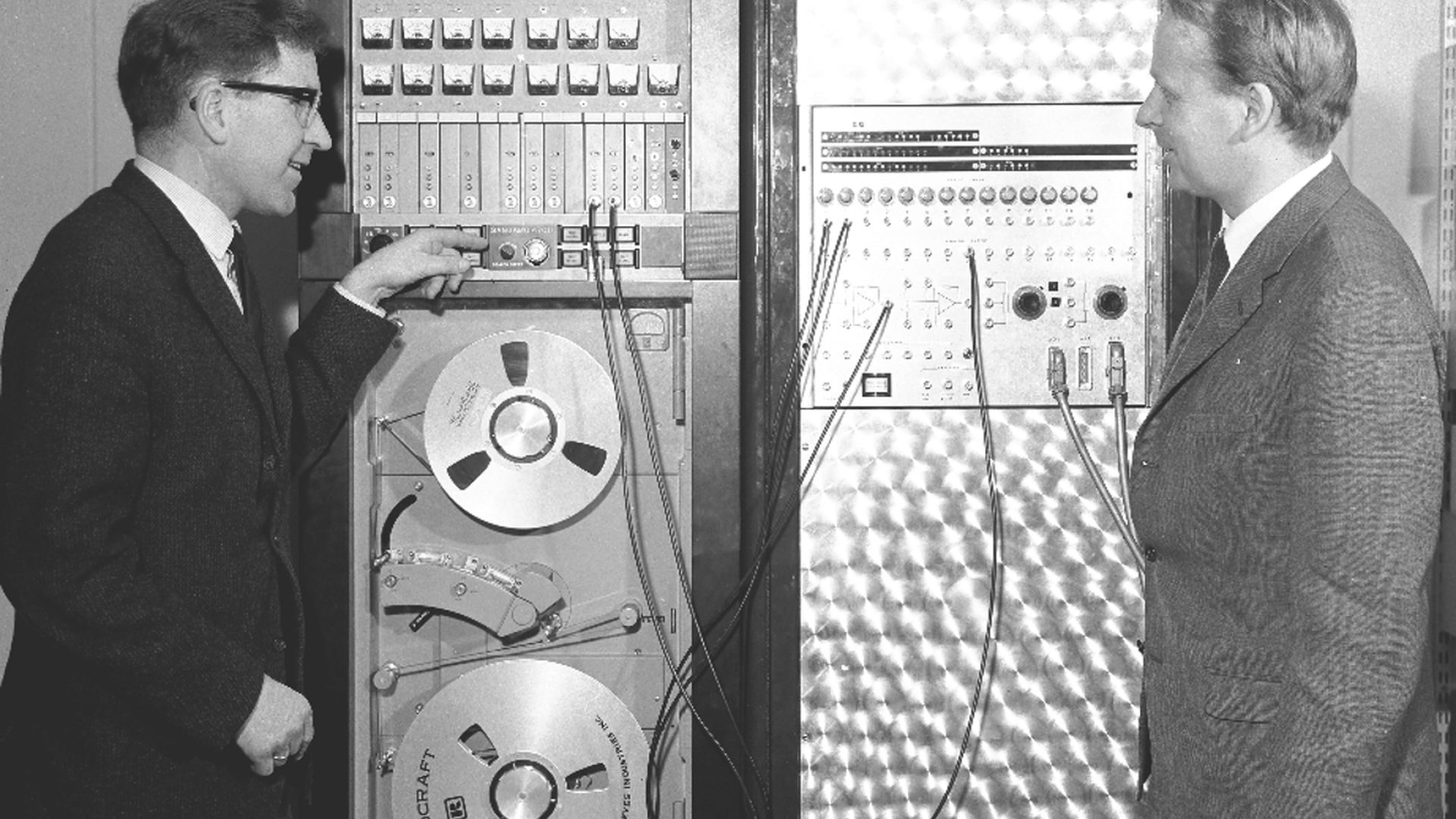
Yngvar Lundh was key in FFIs work on computers. An important goal of FFI’s self-produced machine SAM was to be able to analyse the Penguin missiles in detail. In 1965, Lundh (left) and Lars Monrad Krohn were able to retrieve highly precise telemetry data from various experiments.
The other reason was the close relationship between Yngvar Lundh and Lawrence Roberts – Larry to friends. Larry had previously worked at the Massachusetts Institute of Technology (MIT). FFI’s Yngvar Lundh worked in the same laboratory. He came to MIT from FFI as a visiting researcher already in 1958 to learn about the innovations in computer development.
In the early 1970s, the American headed ARPA’s Department of Communication. It was he who designed and managed the development of Arpanet. Yngvar Lundh was always in close contact with Roberts and the environment around him. From 1972, Lundh and the research group collaborated with ARPA on the technology behind what would become the Internet.
Lundh became a key figure for many of the major innovations at FFI. It was he who, after returning home from the United States, formed the ‘numbers group’ at FFI. For them, it was important to move away from electron tubes and use transistors and printed circuit boards in computers. The SAM machines were developed for simulation, Lydia and Martinus were used for signal processing while the machine Rasmus was designed for automatic control and telecom.
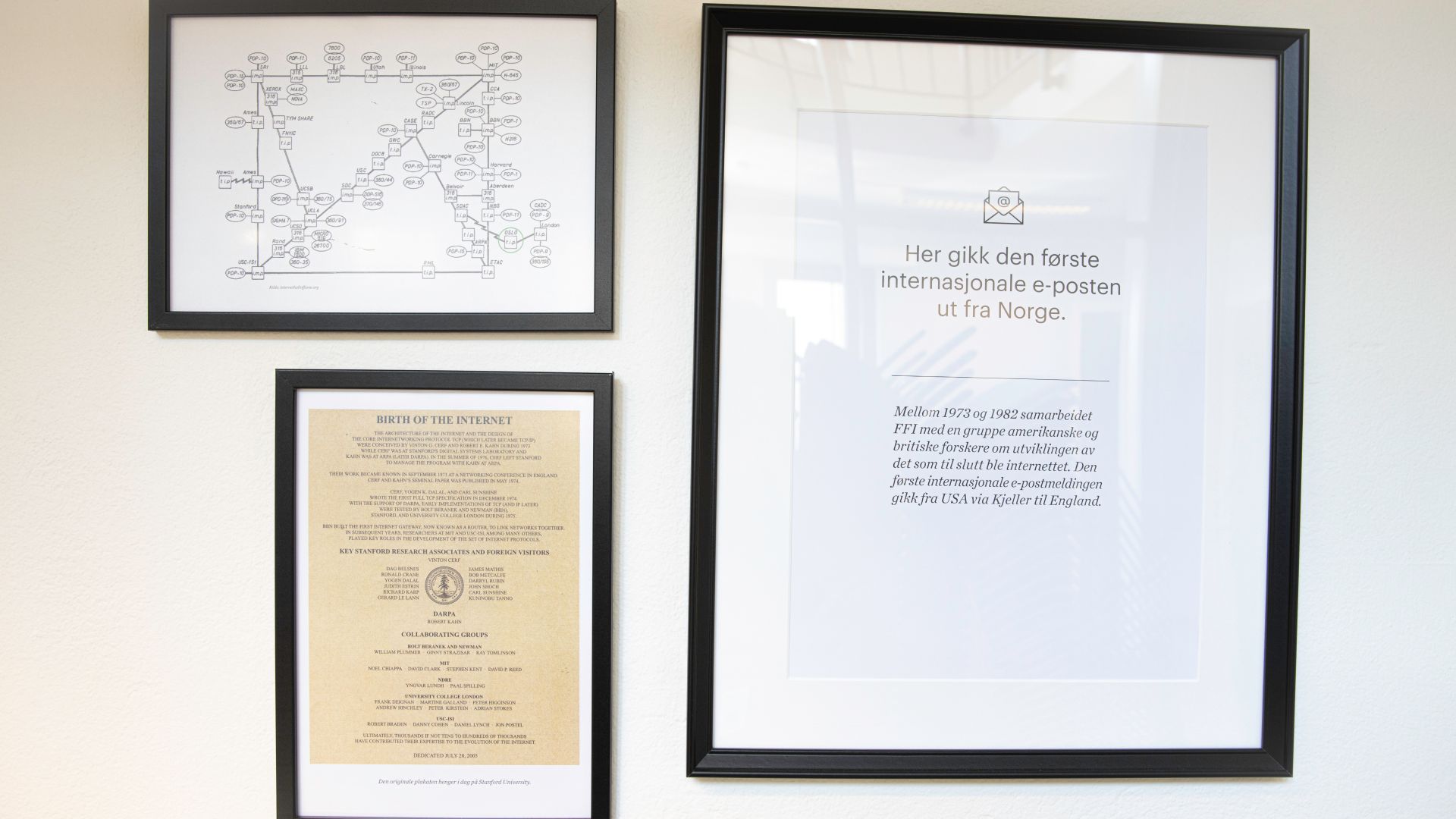
Where Pål Spilling made the necessary keystrokes to bring FFI online in 1973, there is a now a commemorative plaque.
Nowadays, a simple mobile phone has more capacity than the computers that contributed to sending the first human beings to The Moon. Therefore, it is difficult to comprehend the landscape in which the FFI researchers and their colleagues, domestically and internationally, were operating.
In 1961, Lundh gave several lectures with titles including “Digital design, the technology with great possibilities”. He explained that he would then often receive informed statements “from those who knew what was actually going on in the world”. This information was that one computer was sufficient to cover Europe’s need for data processing machines.
The following is stated in FFI’s history booklet on computer technology: “Initially, governing international bodies probably wanted to decide that Europe’s first data processing machine be placed in Rome. So, Lundh was kindly advised to use the taxpayers’ money on something more useful.”
The development after a ship from Hull was unloaded in the Port of Oslo in 1957, tells quite a different story.